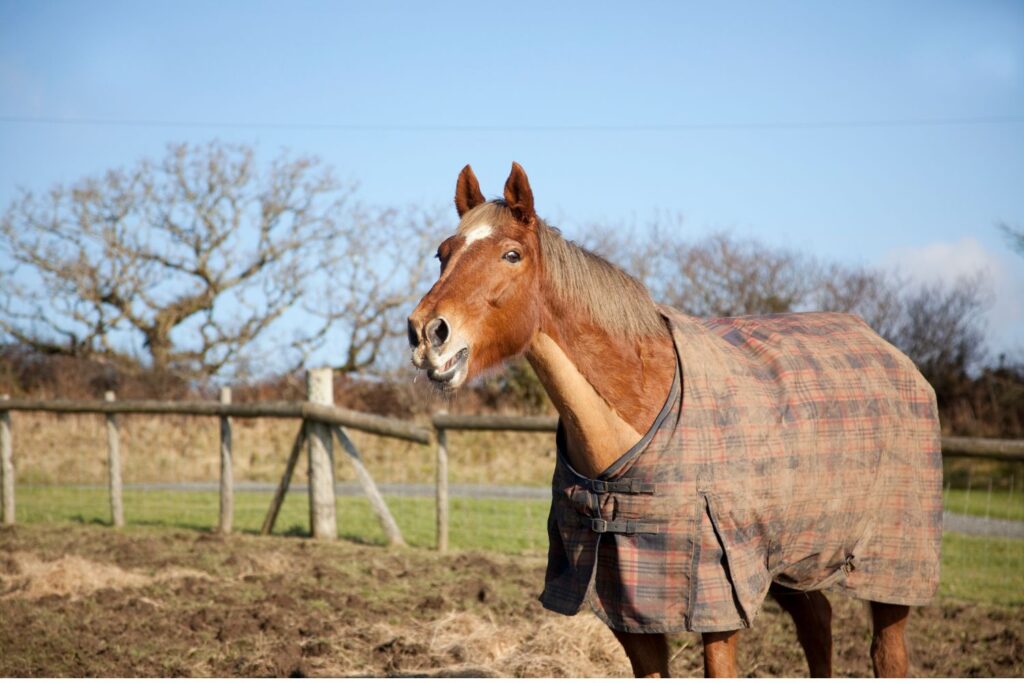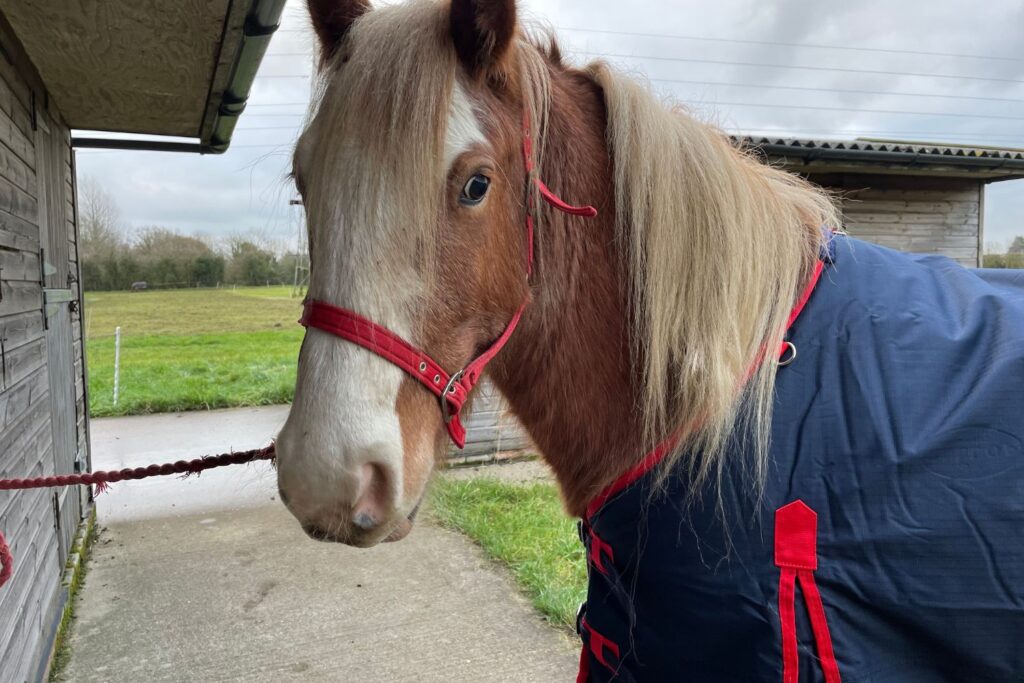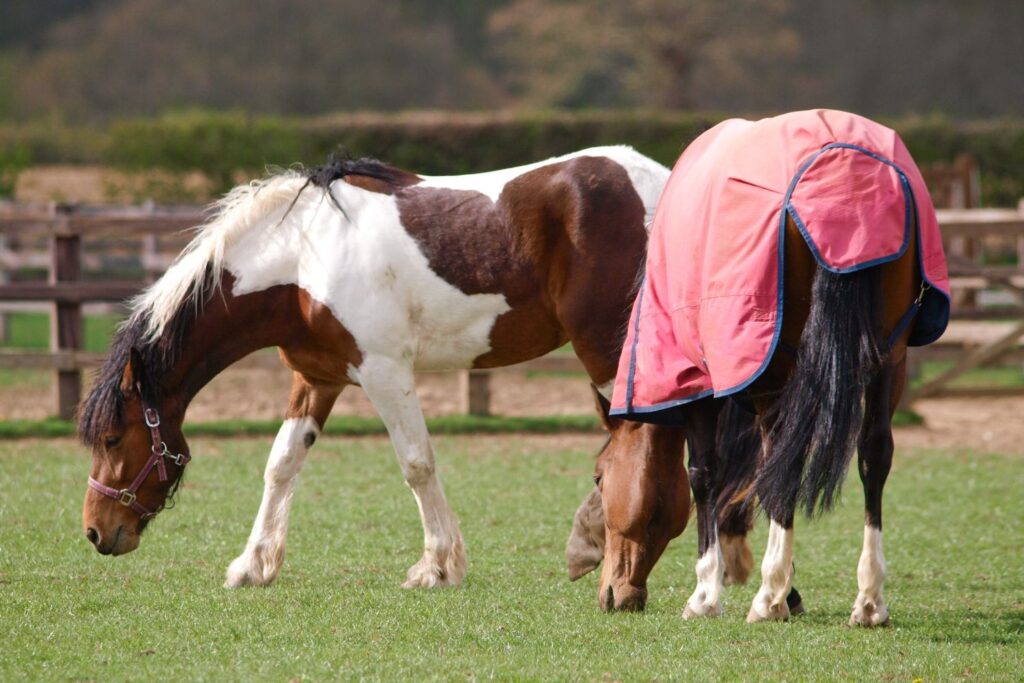Which Rug Does My Horse Need?
Are you uncertain about which rug is best for your horse?
This article covers everything you need to know about horse rugs, from different types to materials, fitting, seasonal considerations, maintenance, and expert recommendations.
Learn about the purpose of each type of rug, proper fit, comfort, transitioning between seasons, maintenance, care, and ensuring your horse’s safety.
Stay tuned for expert opinions, case studies, and safety tips!
The Purpose of Different Rugs for Horses

Understanding the purpose of different rugs for horses is crucial for horse owners to provide optimal care and protection for their equine companions. Different types of rugs serve specific functions depending on the weather conditions, horse’s body condition, and management practices.
For instance, turnout rugs are designed to keep horses warm and dry when out in the field or paddock during cold or wet weather. These rugs are typically waterproof and often have breathable fabrics to prevent overheating.
On the other hand, stable rugs offer warmth indoors, ideal for colder temperatures in the barn. Fly rugs are essential in summer to protect horses from pesky insects and sunlight, ensuring their comfort and well-being. Specialised rugs like sweat rugs help with moisture control after exercise, aiding in the horse’s recovery and maintaining a healthy coat.
What are the Different Types of Rugs for Horses?
There are several types of rugs for horses, including lightweight turnout rugs, heavyweight stable rugs, and versatile turnout rugs that serve different functions based on the weather and horse’s needs.
Lightweight turnout rugs are typically made from breathable materials like polyester or nylon, making them perfect for hotter days or milder weather. They provide protection from light rain and wind while allowing the horse’s skin to breathe, preventing overheating. These rugs are ideal for active horses or those who need some extra warmth without bulk.
On the other hand, heavyweight stable rugs are designed for colder temperatures, often featuring insulated or padded layers to keep the horse warm and cosy. They are perfect for stabled horses during winter or for those clipped short. These rugs offer excellent warmth and comfort, ensuring the horse stays snug even in freezing conditions.
Versatile turnout rugs are a combination of both lightweight and heavyweight features, making them suitable for a range of weather conditions. They are often waterproof and breathable, providing protection against rain, wind, and even snow. These rugs offer flexibility for horse owners who want a single option for various weather changes, ensuring their horse stays comfortable and protected year-round.
What is the Purpose of Each Type of Rug?
Each type of rug for horses serves a specific purpose, such as providing protection from the elements, offering warmth during cold weather, managing moisture to prevent skin issues, and ensuring the horse’s comfort throughout different seasons.
A turnout rug, for example, is designed to keep horses dry and warm in wet and chilly conditions. These rugs are often waterproof and breathable, making them ideal for outdoor use. On the other hand, stable rugs are used indoors to provide extra warmth without the need for weather protection. Fly rugs are essential for protecting horses from insects and UV exposure during the warmer months, while cooling rugs help prevent overheating on hot days.
Material and Build of Horse Rugs
The material and build of horse rugs play a vital role in their effectiveness and durability. Understanding the fabrics, stitching techniques, and overall construction is essential for selecting the right rug for your horse’s needs.
Common materials used in horse rugs include polyester, nylon, and natural fibres like wool and cotton. Polyester offers durability and colour fastness, while nylon provides strength and abrasion resistance. Wool is known for its natural breathability and moisture-wicking properties, keeping the horse comfortable. Cotton is gentle on the skin and offers good breathability.
- Waterproofing: Many rugs feature a waterproof outer layer, often made of nylon or polyester with a waterproof coating to protect the horse from the elements.
- Insulation: Rugs may have various insulation types, such as fillings of synthetic fibres or natural wool to provide warmth in cold weather.
- Seams and Closures: High-quality rugs have taped seams and secure closures like buckles or clips to prevent leakage and ensure a snug fit.
- Reinforcements: Areas prone to wear, like shoulders and chest, are reinforced with additional layers or materials for enhanced durability.
What Materials are Horse Rugs Made of?
Horse rugs are crafted from a variety of materials, including fleece for warmth, waterproof fabrics for protection from rain, insulating fills for added warmth, and multiple layers to provide comfort and functionality.
In terms of insulation, fleece is a popular choice due to its ability to trap heat close to the horse’s body during cold weather, keeping them warm and comfortable. Waterproof fabrics such as nylon or polyester help to shield the horse from rain, snow, and moisture, ensuring they stay dry and protected.
Insulating fills like polyester or wool play a crucial role in maintaining optimal body temperature by retaining heat. The use of multiple layers in horse rugs not only enhances their durability but also allows for customisation based on weather conditions, with options to add or remove layers as needed.
How is the Build of Horse Rugs Important?
The build quality of horse rugs, including seams, fastenings, reinforcements, and stitching, significantly impacts their performance and longevity. Well-constructed rugs with reinforced seams and quality fastenings are more durable and provide better protection for the horse.
Quality stitching techniques and reinforced areas not only contribute to the durability of the rug but also enhance its overall functionality. When seams are securely stitched and reinforced, the chances of tears or fraying are minimised, ensuring the rug stands up to daily wear and tear.
Sturdy fastenings play a crucial role in keeping the rug securely in place, preventing shifting and potential injuries to the horse. These fastenings, whether buckles, straps, or Velcro, need to be robust and reliable to maintain the rug’s fit and stability.
Fitting and Comfort of Horse Rugs
Ensuring the proper fitting and comfort of horse rugs is essential to prevent discomfort, rubbing, and potential injuries for the horse. A well-fitted rug that offers comfort and freedom of movement is crucial for the horse’s well-being.
When a horse’s rug fits correctly, it can prevent chafing, which can lead to painful sores and skin irritations. These sores not only cause discomfort but can also result in more serious issues if left untreated. Properly fitting rugs also ensure that the horse can move freely without any restrictions, allowing it to exhibit its natural behaviours without any hindrance. A secure rug that stays in place significantly reduces the risk of slipping, especially during activities or movement, providing a sense of stability and safety for the horse.
Why is Proper Fitting Important for Horse Rugs?
Proper fitting of horse rugs is crucial to prevent issues such as chafing, restriction of movement, and potential injuries. A well-fitted rug allows the horse to move freely while providing the necessary protection and comfort.
When a horse rug fits correctly, it contours to the animal’s body shape, avoiding any rubbing or pressure points that can lead to discomfort. Plus preventing chafing, a properly fitted rug ensures that the horse’s skin is not irritated, reducing the risk of skin conditions. An ill-fitting rug can cause movement restrictions, impacting the horse’s ability to perform optimally. To maintain the horse’s well-being and performance levels, it is imperative to invest in horse rugs that fit snugly but allow for natural movement.
How Can I Ensure My Horse is Comfortable in Their Rug?
To ensure your horse is comfortable in its rug, prioritize freedom of movement, optimal mobility, and a snug yet non-restrictive fit. Regularly check the rug’s fit and condition to maintain your horse’s comfort and well-being.
One of the key factors in guaranteeing your horse’s comfort in rugs is ensuring that the fabric does not impede its natural movements. The rug should be snug enough to provide warmth and protection, yet loose enough that it doesn’t restrict the horse’s range of motion. Keeping an eye on any signs of rubbing or chafing is crucial to avoid discomfort for your equine friend. Checking the fit across the shoulders, chest, and hindquarters regularly will help you identify any areas where adjustments are needed.
By conducting regular inspections of your horse’s rugs, you can prevent potential issues caused by ill-fitting or worn-out gear. Make sure to pay attention to any areas where the rug might be too tight or too loose, as this can lead to discomfort or even injuries. Consider the material of the rug and how it sits on your horse’s body to ensure maximum comfort. Investing in high-quality rugs that prioritise both function and fit will benefit your horse in the long run, enhancing their well-being and overall performance.
Seasonal Considerations for Horse Rugs
Adapting horse rugs to seasonal changes is essential to ensure your horse remains comfortable and protected throughout the year. Different types of rugs are suitable for varying weather conditions and seasonal fluctuations.
For instance, during the chilly winter months, heavyweight turnout rugs provide insulation and protection against the cold, wind, and rain.
Meanwhile, in the milder spring and autumn seasons, medium-weight turnout rugs offer the right balance of warmth and breathability, keeping your horse cosy without overheating.
As summer approaches, lightweight fly rugs are invaluable in shielding your horse from pesky insects while allowing air circulation to prevent sweating and irritation.
What Type of Rug is Best for Each Season?
Choosing the right type of rug for each season is crucial for maintaining your horse’s comfort and well-being. Lightweight rugs are ideal for summer, while heavyweight and insulated rugs offer warmth and protection in winter.
When transitioning between seasons, opting for rain sheets and cooler rugs in the shoulder seasons can provide the right balance of protection without overheating your horse. During spring and autumn, consider using turnout rugs with varying weights to cater to fluctuating temperatures.
For extreme cold conditions, investing in combo rugs with neck covers and belly wraps can ensure your horse remains cosy and insulated. Conversely, in scorching summer months, lightweight fly rugs with UV protection are essential to shield your horse from the sun and pesky insects.
How Can I Transition My Horse’s Rugs Between Seasons?
Transitioning your horse’s rugs between seasons requires careful consideration to maintain your horse’s comfort and protection. Gradually introduce lighter or heavier rugs as the weather shifts to ensure your horse remains cosy and well-protected.
As the temperatures rise, you may need to change your horse’s heavy winter rug for a lighter option. Watch your horse’s body condition to determine if they are too warm or too cold. It’s essential to regularly check for any rub marks or discomfort caused by the rugs. Remember to adjust your horse’s rugs based on the time of day and night since temperatures can vary. Consider using a waterproof sheet during transitional seasons to protect your horse from unexpected rain or wind.
Maintenance and Care for Horse Rugs

Proper maintenance and care for horse rugs are essential to prolong their lifespan and effectiveness. Regular cleaning, storage, and repairs help ensure that the rugs remain in good condition and provide optimal protection for the horse.
In terms of maintaining horse rugs, a key aspect is regular cleaning. Dirt, sweat, and debris can accumulate on the fabric, leading to deterioration if left unattended. Use a gentle brush or hose to remove dirt, and follow the manufacturer’s guidelines for washing. Proper drying is crucial to prevent mould and mildew.
Proper storage is vital to prevent damage. Keep rugs in a dry, well-ventilated area away from direct sunlight and moisture. Rolling rugs instead of folding them can prevent creasing and damage to the fibres.
Timely repairs are also crucial. Regularly inspect rugs for loose stitching, tears, or worn-out patches. Addressing these issues promptly can prevent further damage and extend the usability of the rugs.
How Should I Clean and Store My Horse’s Rugs?
Cleaning and properly storing your horse’s rugs are key aspects of maintaining their quality and performance. Regular cleaning with suitable products and storing rugs in a dry, well-ventilated area can prevent mould, odours, and damage.
When cleaning your horse rugs, always follow the manufacturer’s instructions for the best results. Use a gentle detergent specifically designed for horse wear to avoid any potential damage to the fabric. It’s important to rinse the rugs thoroughly after washing to ensure all soap residue is removed, as this can irritate your horse’s skin.
After cleaning, allow the rugs to air dry completely before storing them. Proper storage is crucial to maintaining the rugs’ integrity. Consider rolling rather than folding to prevent creases and potential damage along fold lines.
What Maintenance is Required for Different Types of Horse Rugs?
Different types of horse rugs require specific maintenance routines to preserve their durability and functionality. Regular inspections, repairs, and cleaning tailored to the rug’s materials are essential for ensuring their long-term performance.
- For turnout rugs made of heavy-duty waterproof materials, it is crucial to regularly check for tears, loose stitching, and waterproofing effectiveness. Ensuring that the waterproof coating is intact can prevent moisture seeping through and keep your horse dry and comfortable.
Regularly washing these rugs with a mild detergent and allowing them to air dry can help maintain their waterproof properties. Fly rugs may need special attention to combat wear and tear caused by insects and sun exposure. Inspecting these rugs for holes and tears is vital in preventing bugs from bothering your horse.
Expert Opinions and Recommendations for Horse Rugs
Seeking expert opinions and recommendations on horse rugs can provide valuable insights and guidance for horse owners looking to make informed decisions. Experts can offer advice on selecting the right rugs, fitting them correctly, and maintaining them for optimal performance.
In terms of choosing horse rugs, professionals in the equine industry suggest considering factors such as the material’s breathability, the horse’s activity level, and the climate conditions.
- Fit is crucial, as a well-fitted rug prevents chafing and discomfort.
- Experts also advise horse owners to regularly check and adjust the fit as the horse’s weight and condition change over time.
- Proper care and maintenance, as advised by knowledgeable individuals, can extend the longevity and effectiveness of the rugs.
Trusting the expertise of seasoned professionals can help horse owners make the best choices for their equine companions.
What Do Experts Recommend for Horse Rugs?
Experts in the equine industry recommend insights and guidance on selecting, fitting, and caring for horse rugs. Their expertise can help horse owners make informed decisions that prioritize the horse’s well-being and comfort.
In terms of selecting the right horse rug, professionals stress the importance of considering factors such as material quality, weight, and weather conditions in your region. By seeking advice from experienced individuals, horse owners can ensure that the rug’s design and fit will provide maximum comfort and protection to the horse.
Proper fitting of the rug is crucial to prevent rubbing and discomfort, as an ill-fitting rug can lead to skin issues and restricted movement. Regular maintenance, including cleaning and repairs, is critical to prolong the lifespan of the rug and ensure its functionality.
How Can I Find the Right Rug for My Horse?
Finding the right rug for your horse involves considering specific criteria such as fit, material, and comfort. Assessing your horse’s needs, the prevailing weather conditions, and the rug’s features can help you make an informed decision.
In terms of fit, the rug should provide ample room for movement without causing any discomfort or chafing. Material quality is vital for durability and ensuring your horse’s skin remains healthy. Opt for breathable fabrics like nylon or polyester blends for better moisture management. Additionally, comfort plays a significant role in your horse’s well-being; look for rugs with padding, secure closures, and adjustable straps for a snug yet comfortable fit. By understanding your horse’s size, shape, and individual preferences, you can select a rug that meets all these essential criteria.
Case Studies and Examples of Horse Rugs

Exploring case studies and examples of horse rugs can offer valuable insights into both successful applications and common challenges. By examining real-world scenarios, horse owners can learn from others’ experiences and make informed decisions regarding rug selection and usage.
For instance, a study conducted by a renowned equine care centre showcased how the use of specialised performance horse rugs significantly improved the overall health and performance of elite racing horses during harsh winter conditions. These rugs not only provided sufficient warmth and protection but also enhanced the horses’ recovery post-exercise.
In contrast, another case highlighted the repercussions of using ill-fitting horse rugs leading to discomfort and chafing, ultimately affecting the horse’s behaviour and performance. The lack of proper rug selection knowledge resulted in prolonged skin issues and unnecessary vet expenses for the owner.
Can You Share Any Success Stories with Horse Rugs?
Sharing success stories related to horse rugs can provide valuable insights into how the right rug choice can positively impact horse care and well-being. Examining successful applications can help horse owners learn from others’ experiences and make informed decisions.
For instance, a waterproof winter rug helped keep a horse warm and dry during harsh weather conditions, preventing illnesses and maintaining the animal’s optimal health. Another example is when a cooling rug aided in reducing a horse’s post-exercise muscle soreness, allowing for quicker recovery and improved performance in subsequent training sessions.
These real-life scenarios illustrate that selecting the appropriate horse rugs is not merely a matter of style or aesthetics but a crucial aspect of equine care that directly impacts the well-being and performance of the animals.
What Are Some Common Challenges with Horse Rugs?
Identifying common challenges associated with horse rugs can help horse owners anticipate issues and find effective solutions. Understanding the potential difficulties related to rug selection, fitting, or maintenance is essential for ensuring the horse’s comfort and well-being.
One of the primary issues horse owners face is ensuring the proper fit of the horse rugs. Ill-fitting rugs can cause discomfort, chafing, and even injuries to the horse. To address this, owners should regularly measure their horse’s size and shape to ensure they are using the correct rug size.
Inadequate rug maintenance can lead to hygiene problems and reduced lifespan of the rugs. Implementing a regular cleaning schedule and proper storage techniques can help prevent mould, bacteria, and wear and tear.
Proper rug selection is crucial too. Choosing the right material and weight according to the weather conditions and the horse’s needs can significantly impact the horse’s overall well-being.
Safety Tips for Using Horse Rugs
Prioritising safety when using horse rugs is paramount to prevent accidents, discomfort, or injuries to the horse. Understanding and addressing common safety concerns associated with rug usage can help ensure that the horse remains safe and comfortable.
One of the key safety measures is to regularly inspect the horse rugs for any signs of wear or damage that could pose a risk to the horse. Ensuring that the rug fits properly and does not cause any rubbing or chafing is essential for the horse’s well-being. It is also crucial to adjust the rug according to the weather conditions to prevent overheating or chilling.
Proper monitoring and care should be maintained to prevent any skin issues that may arise from prolonged use of horse rugs.
What Are Some Common Safety Concerns with Horse Rugs?
Identifying and addressing common safety concerns related to horse rugs is crucial for preventing accidents and injuries. By taking proactive measures to mitigate risks and ensure proper rug usage, horse owners can create a safe and comfortable environment for their equine companions.
One of the key concerns with horse rugs is the potential for rubbing and causing skin irritation on the horse. Ensuring that the rugs fit properly and are made from breathable materials can help alleviate this risk. Always check for any loose straps or buckles that could pose a hazard. It’s also important to regularly inspect the condition of the rug for any tears or damage that could lead to further issues.
How Can I Ensure My Horse is Safe and Comfortable in Their Rug?
Ensuring that your horse is both safe and comfortable in its rug requires careful attention to fit, condition, and hazard prevention.
One crucial aspect of maintaining your horse’s safety and comfort is regularly checking the rug for any signs of wear and tear, such as loose straps or tears. These issues can not only compromise the rug’s effectiveness but also pose risks to your horse’s well-being.
It’s essential to assess the fit of the rug to ensure it’s not too tight or too loose, which can lead to discomfort or even injuries for your horse. Be mindful of the rug’s positioning, especially around the shoulders and withers, to prevent chafing or rubbing.
